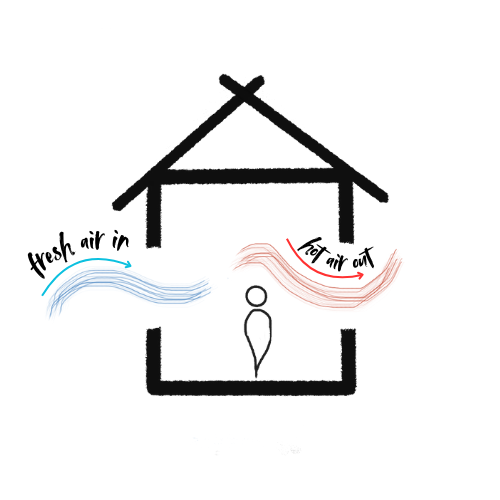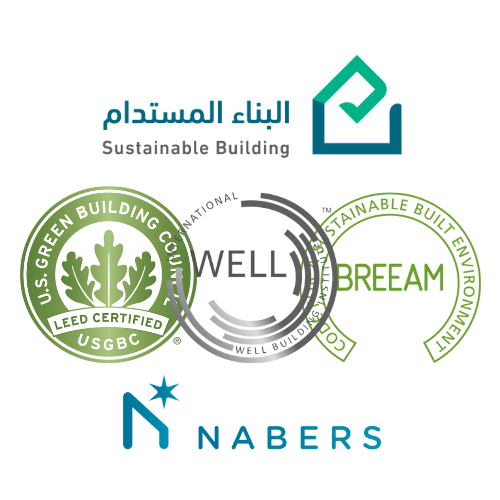Understanding Climate Change Impacts on the Built Environment
Climate Change impacts are more present now than ever before. These impacts are widespread, from accelerating sea-level rise threatening coastal communities to shifting weather patterns affecting rainfall cycles, temperature increases, agricultural productivity, and biodiversity.
For the construction sector, these transformations present unique challenges that demand urgent and strategic climate adaptation in construction.
Direct Impacts of Climate Change on Buildings
1. Extreme Temperature Increases
Global warming is causing more intense and frequent heat waves, particularly in urban centres. Buildings designed for milder climates now face:
- Air conditioning system overload
- Occupant thermal discomfort
- Significant increase in energy consumption
- Accelerated deterioration of construction materials
2. Changing Precipitation Patterns
Climate change in construction manifests through:
- More intense torrential rainfall, requiring more robust drainage systems
- Prolonged drought periods, affecting water availability
- More extreme seasonal variations, impacting construction planning
3. Extreme Weather Events
More frequent storms, hurricanes, and floods demand:
- More resilient structures
- Efficient evacuation systems
- Weather-resistant materials
Our response to these climate hazards must be proactive, drawing on a combination of traditional knowledge and innovative technologies. By prioritising climate-resilient infrastructure and adopting adaptive measures, we can navigate the complexities of climate change and protect vulnerable communities from its most severe impacts.
Climate Change Adaptation vs. Climate Change Mitigation
According to the Intergovernmental Panel on Climate Change (IPCC):
Climate Change Adaptation: Means taking steps to prepare for and deal with the effects of climate change. In cities, this can include making infrastructure more robust, managing floods, and planning for extreme heat waves.
Climate Change Mitigation: Focuses on reducing greenhouse gas emissions to slow down climate change. In cities, this can involve using renewable energy, making buildings more energy-efficient, and promoting green transportation.
Both adaptation and mitigation are important for tackling climate change in cities and making them sustainable and resilient in the long term.
Climate Adaptation Strategies for Buildings
Addressing climate vulnerabilities requires proactive measures and a strategic approach to adaptation and mitigation. Tailoring strategies to specific climate hazard risks enhances resilience and prepares us for future climate change projections. This involves understanding the unique challenges posed by various climate hazards and aligning our responses effectively.
Urban Resilience Through Bioclimatic Design
Urban resilience can be achieved through specific strategies:
1. Preventive Climate Simulation
- Analysis of future climate scenarios
- Thermal modelling considering temperature increases
- Extreme event simulation for resistance testing
2. Enhanced Natural Ventilation
- Passive cooling systems
- Strategic cross-ventilation
- Utilisation of local breezes
3. Intelligent Thermal Management
- High thermal mass materials
- Thermal insulation suitable for future climate
- Green roofs for urban heat reduction
Climate Adaptation Technologies
Passive Systems:
- Wind towers for evaporative cooling
- Internal courtyards for microclimate creation
- Adjustable solar protection
Efficient Active Systems:
- Geothermal heat pumps
- Heat recovery systems
- Mechanical ventilation with intelligent control
How Construction Can Adapt to Climate Change
1. Resilient Urban Planning
- Green corridors for heat island reduction
- Sustainable drainage systems (SUDS)
- Climate zoning considering future projections
2. Updated Building Codes
- Revision of technical standards
- Minimum energy efficiency requirements
- Resistance standards for extreme events
3. Innovative Materials and Technologies
- Phase change materials (PCM)
- Permeable concrete for stormwater management
- Smart glass for automatic solar control
Each of these strategies not only addresses the immediate impacts of climate hazards but also contributes to the long-term goal of creating climate-resilient communities and infrastructure. By understanding and applying targeted adaptation and mitigation actions, we can reduce our vulnerability to climate change and protect our environment, economy and well-being against its impending impacts.
Economic Benefits of Climate Adaptation
Building climate adaptation offers significant returns:
- Operational cost reduction up to 50%
- Property valuation increase of 15-25%
- Lower insurance risk due to greater resilience
- Anticipated regulatory compliance
Anticipating Climate Change Risks and Opportunities
To manage climate risks, several proactive actions come into play. Updating infrastructure to withstand more severe climate conditions is a fundamental step. This can include reinforcing buildings, improving flood defences, and enhancing the resilience of utility networks. Additionally, adapting the use of existing infrastructure, such as converting flood-prone areas into green spaces that can absorb excess water, plays a critical role in climate resilience.
Raising awareness about the impacts of climate change is another crucial action. Educating communities, organisations, and individuals about their role in mitigation and the importance of adapting to changing climate conditions can drive collective action. It involves communicating the potential risks of climate change and practical measures that can be taken to reduce them.
If you want to learn more about this topic, we also have a post on the importance of making Cities Resilient and Sustainable in the Face of Climate Change, click here to read.






